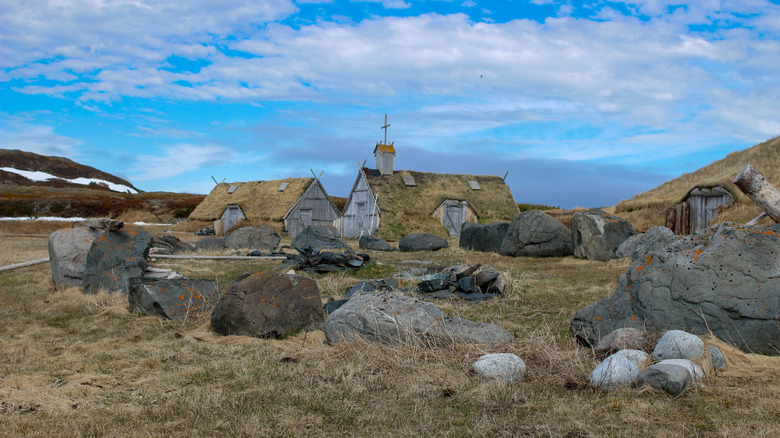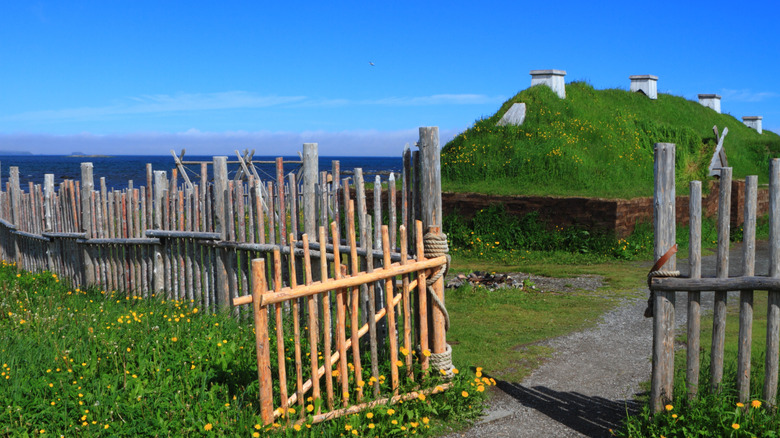As far as European history in North America goes, most people associate the earliest settlers with Christopher Columbus in the 15th century, or maybe the pilgrims coming to New England in the 1600s. But there was one European group that arrived on the continent long before. In fact, the Norse Vikings came to North America around AD 1021, a 2022 study in Nature estimated, which would place their arrival nearly 500 years before Columbus’. There’s one site that serves as evidence of these early American settlers, tucked among the windblown cliffs of Newfoundland, Canada, overlooking the Atlantic horizon. It’s the L’Anse aux Meadows National Historic Site, a UNESCO World Heritage location where you can visit relics of an ancient Viking settlement.
Considering that Canada is the country with the longest coastline in the world, it makes sense that the Vikings landed here en route from Greenland. The site wasn’t discovered until 1960, though, making it the first confirmed Norse site in North America (and, so far, the only). Its discovery flipped the previously accepted narrative that Columbus was the first European to find the continent — and might flip some of your assumptions, too. The site includes eight Viking buildings and dozens of artifacts from the settlement, including tools and ornaments. There’s even some evidence of the Vikings’ exploration of other areas of North America. Plus, you can listen to Norse sagas, see reenactments of the old settlement, and hike along the same coastline explored by the Vikings over 1,000 years ago.
The archaeological significance of L’Anse aux Meadows in Newfoundland
Before the L’Anse aux Meadows site was discovered, there were stories about Vikings discovering a place they called “Vinland” in Icelandic Sagas. Historians believed that this was referencing North America, so they began looking for evidence of the Vikings’ presence on the continent. One Norwegian explorer, Helge Ingstad, began to excavate a series of strange ridges along the Newfoundland coast. These structures turned out to be the overgrown walls of a legendary Viking settlement. Among the group of buildings, they discovered three homes, a forge, and four workshops. A few clues pinpointed the site as belonging to the Norse Vikings, including the signature timber-framed building style, remains from smelted iron, and artifacts typical of Norse garb.
The L’Anse aux Meadows site served as a starting point for Vikings to explore the continent, rather than a long-term colony. “It was a base for further exploration, a gateway to other sites,” said former Parks Canada archaeologist Birgitta Wallace in Archaeology Magazine. Some artifacts at the site — namely, hardwood lumber and butternuts — come from the south of Canada, suggesting that the Vikings were also active in the New Brunswick region. With a tour of L’Anse aux Meadows, you get to see a reconstruction of what this settlement would have looked like in the 11th century. You can wander the site on your own or partake in one of its special programs that include reenactments and guides.




